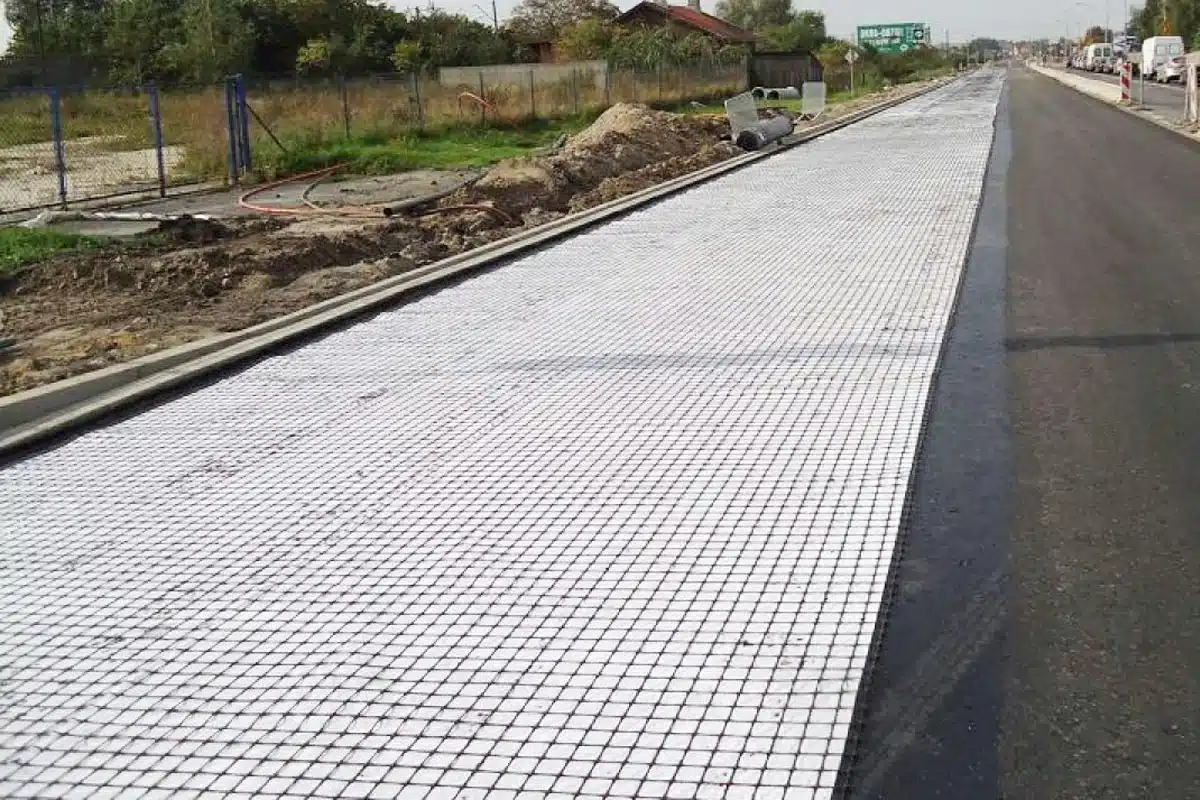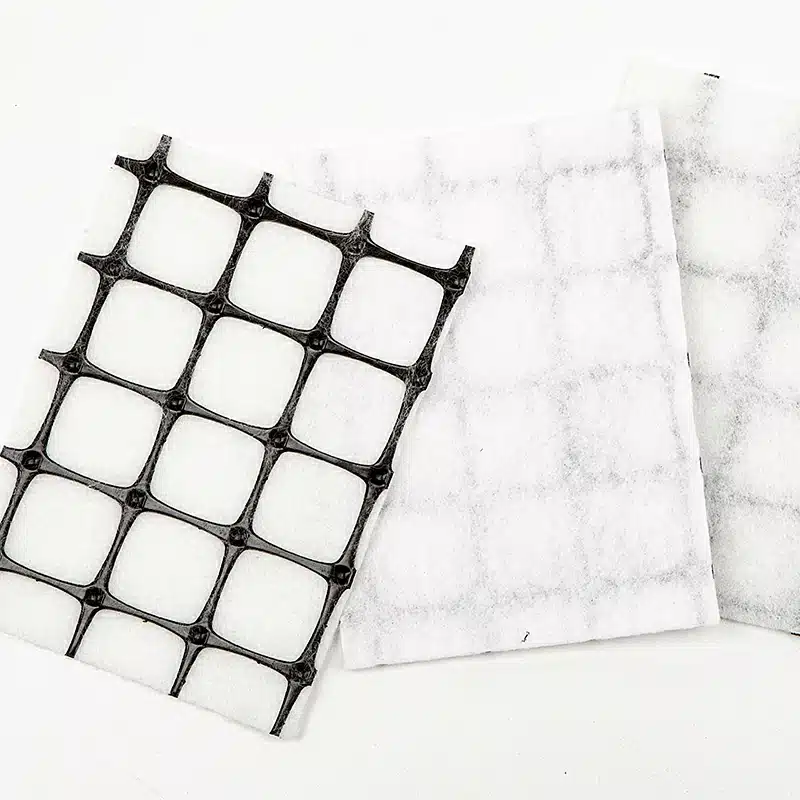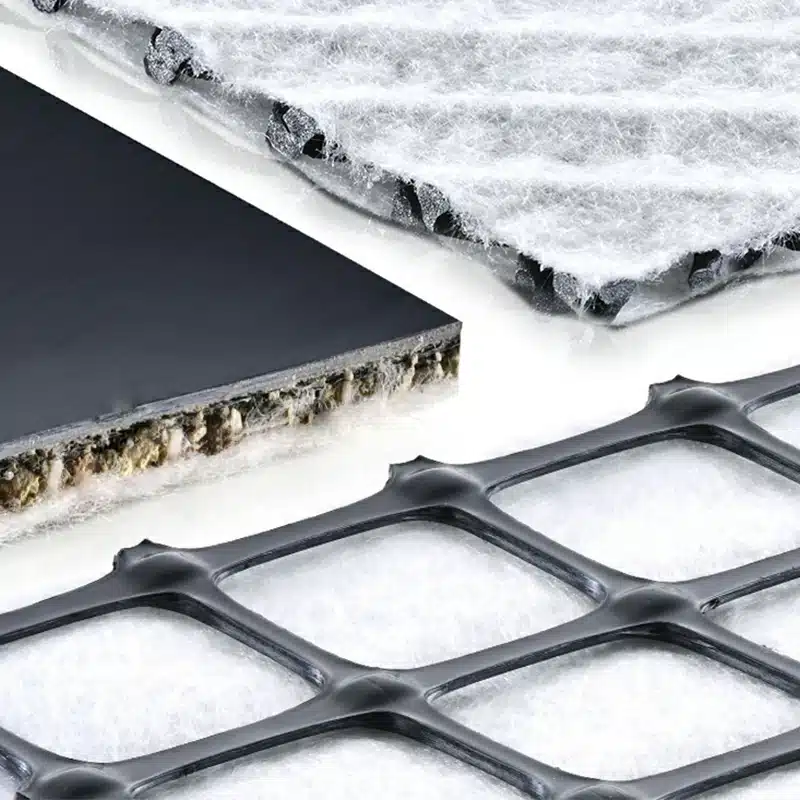+86-159 9860 6917
info@geofantex.com
geofantex@gmail.com
+86-400-8266163-44899
Geocomposite wall drains are an innovative solution designed to manage water drainage in retaining walls, helping prevent water pressure buildup and subsequent structural damage. These systems combine multiple geosynthetic materials, offering a more efficient and versatile approach to controlling water and soil stability. In this article, we will explore what geocomposite wall drains are, their benefits, and how they compare to other geosynthetic materials.
What is a geocomposite wall drain?
Definition: A geocomposite wall drain is a type of drainage system used in construction to manage and control water behind retaining walls, basement walls, or other vertical structures. It consists of a combination of drainage layers that allow for the collection and efficient removal of water. This helps prevent hydrostatic pressure build-up, which can lead to structural damage.
Composition:
A typical geocomposite wall drain is made up of two main components:
| Geotextile Fabric | A permeable material that allows water to pass through while preventing soil particles from clogging the system. |
| Core Material | A plastic or synthetic core, usually in a grid or cuspated form, that provides pathways for water to flow and be collected. |
These components are layered together, with the geotextile acting as a filter and the core as the conduit for water movement.
Purpose: The main purpose of a geocomposite wall drain is to prevent water accumulation behind walls by directing water away from the structure. This mitigates the risk of water infiltration and pressure, which can cause leaks, cracks, and long-term structural failure.
Advantages:
| Efficient Drainage | The design of geocomposite drains ensures faster water removal compared to traditional gravel-based systems. |
| Cost-Effective | Geocomposite drains are lighter and easier to install, reducing labor and material costs. |
| Space-Saving | These systems take up less space than conventional drainage layers like gravel. |
| Environmental Benefits | Since they reduce the need for natural resources like gravel, geocomposite drains are considered more sustainable. |
Applications:
| Retaining Walls | Used to relieve pressure behind retaining structures by channeling water away. |
| Basement Walls | Prevents water from seeping into basements, particularly in high water table areas. |
| Landfills and Environmental Containment | Helps control leachate in waste management systems. |
| Tunnels | Provides drainage to avoid water ingress in subterranean structures. |

What is the difference between geotextile and geocomposite?
Definitions:
- Geotextile: Geotextiles are permeable fabrics made from synthetic or natural fibers. These materials are used in civil engineering, construction, and environmental projects primarily to filter, reinforce, separate, or protect the soil.
- Geocomposite: Geocomposites are multi-layered systems that combine different types of geosynthetics (e.g., geotextiles, geogrids, geomembranes) to enhance performance. They are designed to serve multiple functions such as drainage, filtration, and protection.
Key Characteristics:
- Geotextile:
- Usually made of polyester or polypropylene.
- Acts as a filter to allow water passage while preventing soil migration.
- Available in woven, non-woven, and knitted varieties.
- Geocomposite:
- Combines two or more geosynthetic materials.
- May include a drainage core or protective layer.
- More complex in structure and offers multiple functionalities.
Applications:
- Geotextile:
- Road construction (separation and stabilization).
- Erosion control and slope stabilization.
- Drainage in retaining walls and embankments.
- Geocomposite:
- Drainage systems in landfills and tunnels.
- Waterproofing in buildings and bridges.
- Road and railway foundations for improved drainage and reinforcement.
Advantages:
- Geotextile:
- Cost-effective for filtration and separation.
- Easy to install and adaptable to various terrain.
- Geocomposite:
- More versatile due to the combination of multiple materials.
- Can address several engineering needs simultaneously, such as drainage, protection, and reinforcement.
Unique Properties and Functions:
- Geotextile: Primarily used for filtering and separating materials, preventing the mixing of different soil layers while allowing water flow.
- Geocomposite: Provides more robust solutions by integrating different geosynthetics. For example, a geocomposite with a drainage core and geotextile layer can manage both drainage and filtration.
Geotextiles and geocomposites are both essential in civil engineering, but while geotextiles mainly offer simple functions such as separation and filtration, geocomposites provide multifunctional solutions that are more adaptable to complex projects involving drainage, protection, and reinforcement.
What is the purpose of geocomposites?
Geocomposites are engineered materials made from the combination of geotextiles, geomembranes, geonets, or other geosynthetics, designed to perform specific functions in civil engineering and environmental applications. Their purpose is to address issues related to soil stability, water management, erosion, and containment of hazardous materials, often enhancing the effectiveness and durability of infrastructure projects.
Applications:
- Drainage Systems: Geocomposites are widely used in drainage applications because they can improve the flow of water while preventing soil clogging. They are commonly used in roads, landfills, and retaining walls to provide effective drainage solutions.
- Erosion Control: Geocomposites help in protecting slopes and embankments from erosion caused by water and wind. They combine materials that stabilize the soil and manage surface water to reduce the risk of landslides and sediment loss.
- Waste Containment: In landfills and environmental protection projects, geocomposites serve as a barrier to prevent leakage of hazardous waste materials into the surrounding environment. They are often paired with geomembranes to provide an additional layer of protection.
Advantages:
- Efficiency: Geocomposites combine the functions of several individual geosynthetics into a single product, making them more effective and easier to install.
- Cost-Effectiveness: Compared to traditional materials like gravel or sand, geocomposites reduce the amount of material needed, saving time and money on construction projects.
- Durability: They offer long-term stability and resistance to environmental factors such as chemical exposure and mechanical stress.
Geocomposites play a crucial role in improving the performance of geotechnical projects by offering efficient drainage, erosion control, and environmental protection. Their multi-functional nature and cost-effectiveness make them a preferred choice over traditional materials in modern engineering practices.
What is the use of geosynthetics in retaining walls?
The Role of Geosynthetics in Retaining Walls
Geosynthetics are synthetic products used in civil engineering to improve soil properties, specifically in structures such as retaining walls. They play crucial roles in enhancing stability, managing drainage, and reinforcing the soil to reduce movement and erosion. Their application has grown significantly in recent years, providing sustainable and cost-effective solutions in various construction projects.
Types of Geosynthetics Used in Retaining Walls
- Geotextiles: These are permeable fabrics that allow water to pass while retaining soil. They’re used for filtration, separation, and reinforcement in retaining walls, helping to prevent soil erosion while facilitating drainage.
- Geogrids: Known for their high tensile strength, geogrids provide structural reinforcement to the soil. They are often placed in layers within the wall fill to distribute loads and limit lateral soil movement.
- Geonets: These are used primarily for drainage, as their open-grid structure allows for the efficient passage of water. When used in retaining walls, they can help reduce hydrostatic pressure, which enhances wall stability.
- Geomembranes: These are impermeable barriers used mainly for waterproofing and containment. They can prevent water infiltration in retaining wall structures, particularly in areas prone to heavy rainfall or flooding.
Functions of Geosynthetics in Retaining Walls
- Reinforcement: Geosynthetics like geogrids are critical for reinforcing soil, increasing the wall’s overall load-bearing capacity. By integrating layers of geogrids, the wall can withstand greater lateral forces, which improves its structural integrity.
- Drainage Control: Geotextiles and geonets are commonly used to improve drainage within retaining walls. They help channel water away from the wall, preventing buildup and reducing hydrostatic pressure, which can otherwise weaken the structure.
- Separation and Filtration: Geotextiles act as a separator between different soil layers, preventing finer soil from migrating into coarser layers. This enhances the stability of the backfill soil, particularly in areas with varying soil types.
- Environmental Protection and Sustainability: By reducing the need for concrete or other materials, geosynthetics contribute to lower carbon emissions and offer a more eco-friendly solution for retaining wall construction.
Advantages of Using Geosynthetics in Retaining Walls
- Enhanced Durability: Reinforcing and stabilizing the soil can significantly extend the lifespan of a retaining wall.
- Cost Savings: By reducing the amount of traditional construction materials required, geosynthetics can lower overall project costs.
- Sustainability: Geosynthetics are lighter, easier to transport, and reduce the need for energy-intensive materials, contributing to greener construction practices.
Case Studies and Real-World Applications
In recent projects, geosynthetics have proven effective in both small-scale and large-scale retaining wall constructions. For instance:
- Highway Embankments: Geogrids and geotextiles have been used in highway embankments, offering critical reinforcement that prevents soil failure and reduces maintenance.
- Urban Landscaping: Geosynthetic-reinforced retaining walls are frequently seen in urban landscapes, where space and load management are critical.
Geosynthetics has transformed retaining wall design by offering tailored solutions that improve both structural performance and sustainability.
Geocomposite wall drains offer an advanced solution for managing water drainage in retaining walls and other structures. By combining geotextiles and drainage cores, geocomposites provide an efficient way to control water flow, reduce hydrostatic pressure, and maintain soil stability. While geotextiles are single-layer materials designed for filtration and separation, geocomposites bring multiple functions together, making them indispensable in modern civil engineering. When used in retaining walls, geosynthetics, including geocomposites, enhance the wall’s performance, ensuring long-lasting structural integrity and reducing the risk of water-related damage.



Get Free Sample
We’ll respond as soon as possible(within 12 hours)






















